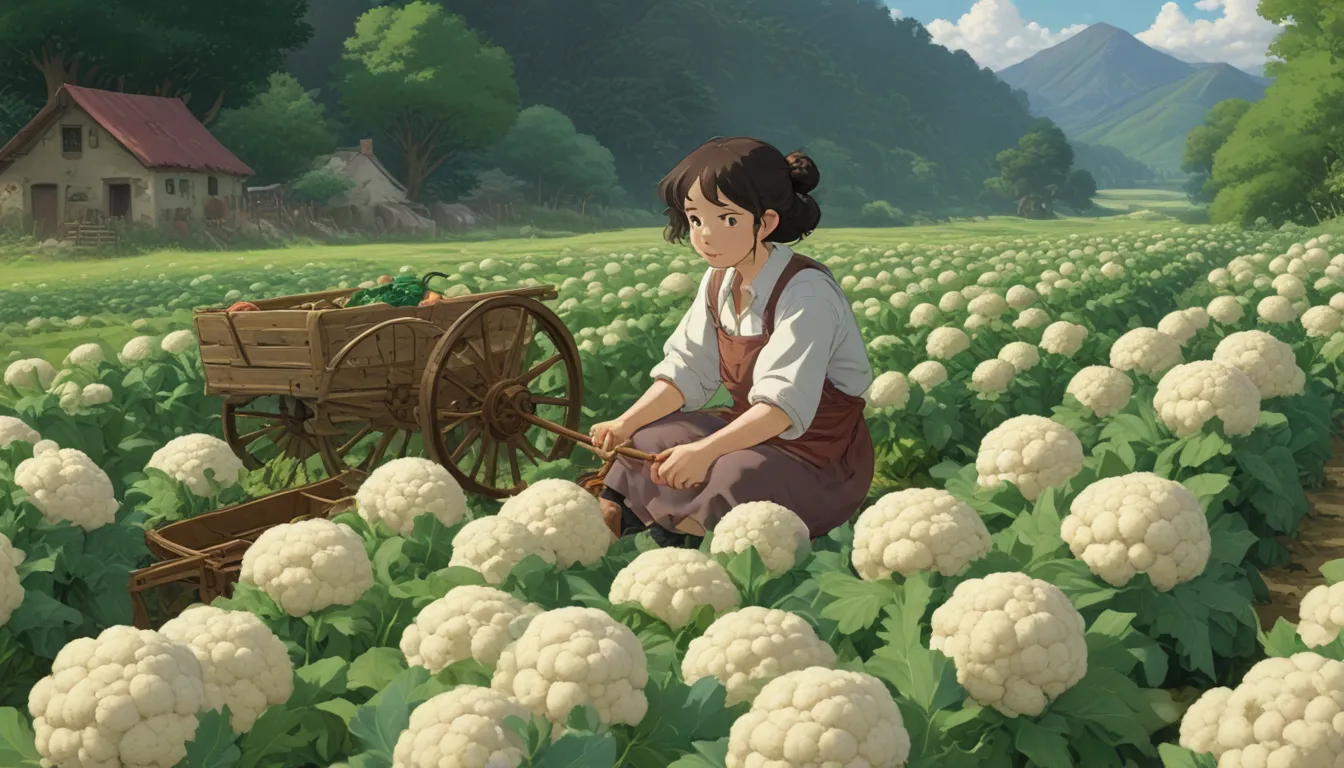Cauliflower Harvesting: A Comprehensive Guide

Cauliflower, a versatile cruciferous vegetable that is not only delicious but also packed with nutrients, is a delight to grow in your garden. From white florets to purple, orange, and green varieties, this vegetable offers a variety of options for culinary exploration.
Unlike its cousin broccoli, cauliflower is prized for its unopened flower buds, which form the dense curds that make up the head. In addition to the edible curds, the leaves and stalks of the cauliflower plant are also edible, making it a versatile addition to your kitchen.
In this guide, we will explore when and how to harvest cauliflower, including signs of readiness, harvesting techniques, preserving methods, and delicious recipe ideas to make the most of your harvest.
What You’ll Learn
- When to Harvest Cauliflower
- Signs of Readiness
- Harvesting and Preserving
- Recipe Ideas
When to Harvest Cauliflower
Cauliflower is a patient crop that requires anywhere from 85 to 130 days from germination to harvest. Keep track of the date of germination in your gardening notebook to ensure you are prepared for the harvest.
The time to harvest cauliflower varies depending on the cultivar, growing conditions, and location. In general, you can expect heads to be ready for harvest around three to five months after germination.
Monitor the size of the flower head, as a head that is about three inches across may need to be blanched to protect it from direct sunlight. Blanching helps preserve the color and flavor of the vegetable and prevents it from turning yellow or bitter.
Signs of Readiness
To avoid cauliflower plants bolting, it is essential to harvest them at the right time. Check the size of the head regularly and look for signs of readiness, such as a smooth and tight curd.
Pay attention to the expected mature head size for the cultivar you are growing, as this can help you determine when it is time to harvest. Avoid waiting too long, as rough-textured curds indicate that the plant is beginning to blossom and should be harvested immediately.
Harvesting and Preserving
Harvesting cauliflower is a simple process that requires only a sharp kitchen knife. Cut the head at the stalk, leaving two to three inches of the stalk attached.
Unlike broccoli, cauliflower plants do not typically produce side shoots, making it easy to harvest the leaves as well. Store the leaves and stalk in the refrigerator in a plastic bag and consume them within three to five days.
To preserve cauliflower for longer periods, consider freezing it. Wash the heads thoroughly, cut them into quarters, blanch them for 60 seconds, and freeze them in labeled bags for up to one year. Flash-freezing cauliflower helps retain its texture and flavor, making it a versatile ingredient for future recipes.
Recipe Ideas
Cauliflower is a versatile vegetable that can be used in a variety of dishes, from low-carb substitutes to flavorful entrees. Grate fresh cauliflower to create a rice substitute for dishes like stuffed peppers or use it to make a creamy sauce for enchiladas.
Experiment with adding cauliflower to smoothies, soups, or even pizza crusts for a nutritious twist on your favorite recipes. Don’t forget to incorporate the leaves and stalks into salads or roasted dishes for added flavor and texture.
A Caul-inary Delight
Growing and harvesting cauliflower can be a rewarding experience, especially when you get to enjoy the fresh flavors of homegrown produce. Whether you prefer to eat it raw, cooked, or blended into your favorite recipes, cauliflower offers endless possibilities for culinary creativity.
Have you harvested cauliflower from your garden? Share your favorite ways to enjoy this versatile vegetable in the comments below!
For more information on growing cauliflower, check out these helpful guides:
- How to Grow Cauliflower, a Challenging Cool-Weather Crop
- How to Grow Cauliflower in Containers
- How to Identify and Treat Common Cauliflower Diseases
Cauliflower harvesting is a satisfying endeavor that offers a bounty of delicious and nutritious rewards. Enjoy the process and savor the flavors of your homegrown produce!





